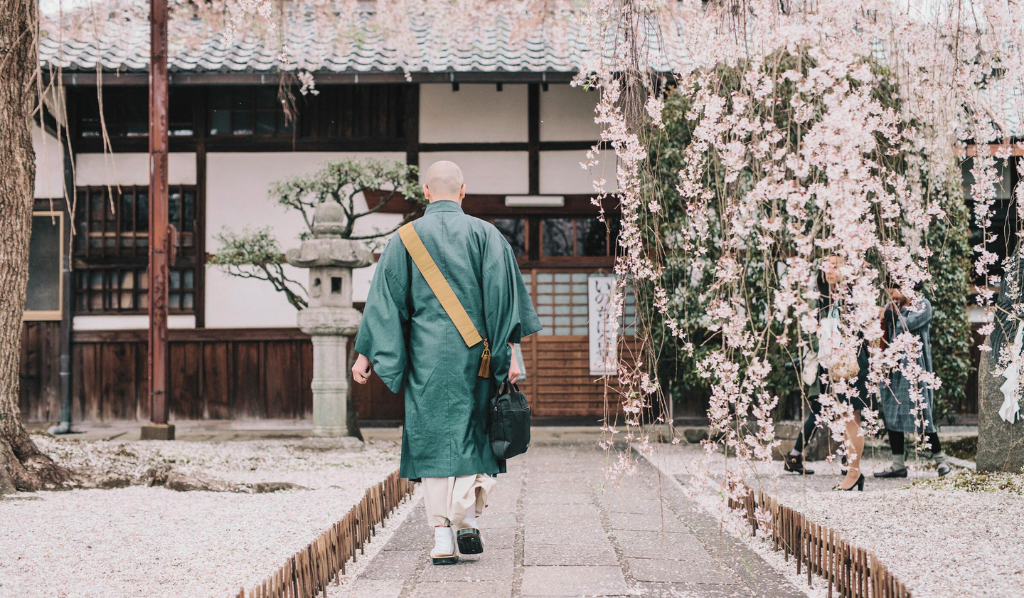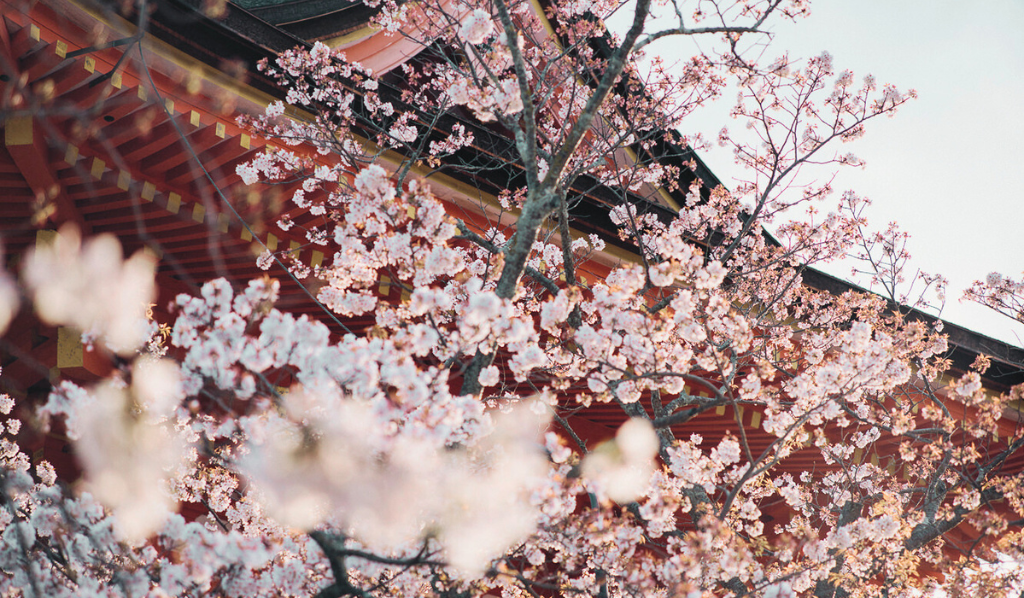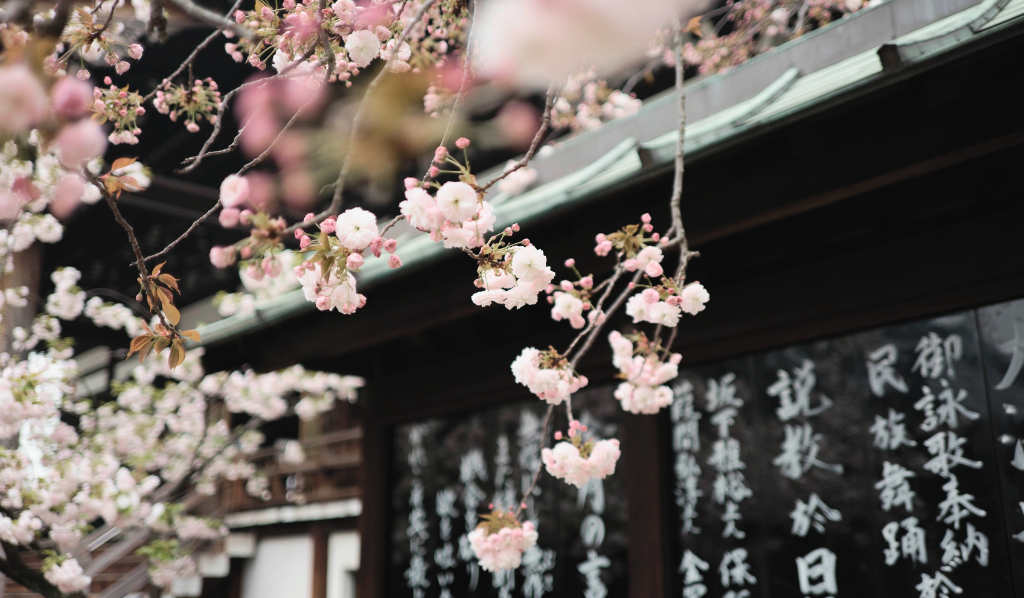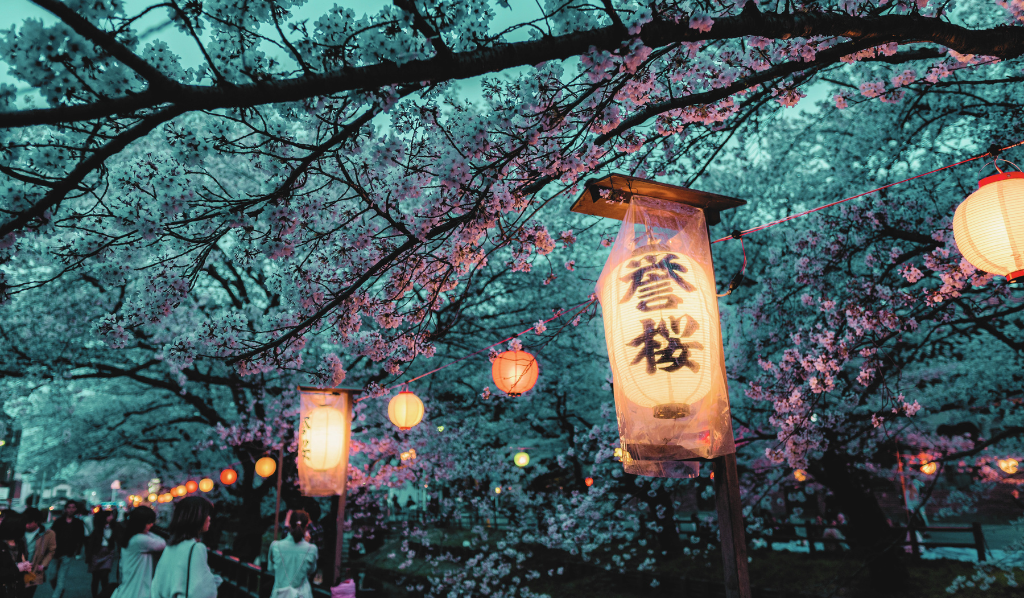
JAPANS CHERRY BLOSSOMS.
Sakura Season in Japan – March 2024.
The cherry blossom (桜, sakura) is Japan’s unofficial national flower. It has been celebrated for many centuries and holds a prominent position in Japanese culture. The arrival of the sakura is so important in Japan that its meteorological office has a service dedicated to forecasting the first blooms, and there are daily reports on them on the national news.
For centuries, a rich and deep culture developed surrounding the fleeting Sakura. Innumerable poems and songs are dedicated to the cherry blossom. Sakura is celebrated in Japanese literature, poetry, and art, scrolled into samurai’s swords, and used as a symbol of new beginnings and friendship.
Not only does cherry blossom season mark the arrival of spring, but the blossoms are also seen as a symbol of hope and renewal: as the environment renews itself, so do the people. The popularity of cherry blossoms lies in their symbolism; they have come to symbolise the transient nature of life. This reflects a longstanding Buddhist concept known as “mono no aware,” or roughly, “the pathos of things”, which in Buddhist literature implies that the delicate petals of the cherry blossoms are a metaphor for the frailty of life. Their fleeting beauty illustrates perfectly that nothing in this world is permanent; everything passes away at some point. An admiration for this impermanence has been an important part of the Japanese mindset since ancient times.
The most common species of cherry blossom in Japan is the Somei-yoshino or Yoshino cherry, a hybrid between two other species. It is known for its almost entirely white petals, tinged with the faintest of pinks. It is often planted along rivers or castle moats, forming a tunnel of shimmering pale shades that reflect off the water.
From the opening of the first blossoms, known by the Japanese as Kaika, it is about one week before the trees bloom. Once the trees have reached full bloom, known as Mankai, there is only about a week to appreciate the spectacle before the blossoms begin to fall from the trees.
During cherry blossom season, whole communities gather at parks and gardens to celebrate the arrival of spring and the beauty of nature with elaborate picnics. Families, friends, and groups of co-workers share meals, sing, and revel in the sublime prettiness from morning till night. Trees are decorated with paper lanterns, so the blossoms can be enjoyed well into the night. Viewing cherry blossoms in the evening is called yozakura, with simple lights and lanterns laced onto the branches so the flowers appear to glow in the dark.
Shops in Japan will sell picnic products aligned with the hanami (flower viewing) theme: dyed pink rice balls, red bean sweet treats, pink Kit-Kats, sticky dyed pink rice cakes wrapped in cherry leaves, and bento boxes with colourful spring-themed delights. Products and decorations in stores become pink, flowery shapes, and sakura-flavoured sweets and drinks adorn menus—the Starbucks sakura-themed drinks have an almost cult-like following.
A FINAL NOTE:
Directed by Lucy Walker (with music by Moby), the 2011 Academy Award-nominated documentary The Tsunami and the Cherry Blossom creates a narrow analogy between the social rebirth after a tsunami and the blooming of the Sakura. Survivors of Japan’s tragic tsunami were interviewed a month after the devastation as they began to rebuild their lives just as the cherry blossom season began. The survivors of the areas devastated by the tsunami that ravaged Japan in 2010 find courage in the blossoming sakura, trees that, to them, embody much more than beauty and transition. The documentary shows horror and beauty, but horror is soon forgotten—as one of the interviewees promptly notes—when spring begins. We learn that the Japanese associate their memories with the blossoming of the sakura, and these are their happiest memories. With the impressive survival of these blooming trees, Japan holds hope of reconstructing its ruins. Most of the sakura that stood in the path of the wave somehow managed to survive, as they did after the radiation from Fukushima. This has strengthened their bonds, and it has also been an endless source of comfort. “If plants survive, humans should also do so”, says someone interviewed for the documentary. You can see the trailer for the documentary here on YouTube. Or you can buy the full film here on Vimeo.
I cannot wait to return to Japan in March when I host our lovey CHERRY BLOSSOMS JAPAN tour. Come join us…
*See details below for how…
So, How do I join??
Easy!
Just email me for the full itinerary and details at [email protected], or have a look via the Tour Link on the website.
You can also sign up on our REGISTER NOW page so we can send you details of Japan and other 2024 and 2025 trips.
Stay curious, everyone, and see you all somewhere amazing in 2024!
Jemma and the Mai Journeys team..



